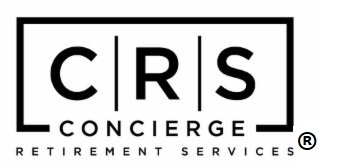Environmental, social and governance investing – better known as ESG to those in the know (by the way, I was one of those not in the know) is a hotly debated topic in the 401(k) world.
Research from Cerulli Associates, which specializes in worldwide asset management and distribution analytics, found that 45% of investor households cited ESG factors as a preferred method of investing, with enthusiasm highest (surprise, surprise) among younger investors.
But households investing and constructing a 401(k) investment lineup that will stand up to possible scrutiny by the Department of Labor (DOL) are two very different things indeed. In Field Assistance Bulletin (FAB) 2015-01, the DOL reiterated its long held view that, since every investment necessarily causes a retirement plan to forego other investment opportunities, plan fiduciaries are “not permitted to sacrifice investment return or take on additional investment risk as a means of using plan investments to promote collateral social policy goals.” This has always been the DOL’s position. The plan is supposed to be run for the sole benefit of the plan participants. Period.
However, in the preamble to FAB 2016-01 the DOL provided what seemed to be contradictory guidance by stating in part that ESG investing can be consistent with a fiduciary’s obligations under ERISA, “if the responsible fiduciary concludes there is a reasonable expectation that such activities (by the plan alone or together with other shareholders) are likely to enhance the economic value of the plan’s investment in that corporation after taking into account the costs involved.” I am at a loss trying to understand how this statement relates to 401(k) plans. What exactly does the DOL mean by saying that it might be OK if the ESG investment(s) “are likely to enhance the economic value of the plan’s investment in that corporation after taking into account the costs involved.” Enhance the value of what corporation? The 401(k) plan invests almost exclusively in mutual funds and ETFs. No one corporation is likely to be “enhanced.”
Advisors and plan sponsors have admittedly been slow to adopt ESG investing as one of the core principles of their 401(k) plan’s investment policy statement. In a separate report, Cerulli found that some of the factors holding back ESG investing in 401(k) plans was a perception that “these strategies do not fit into client investment policy statements (26%), their negative impact on investment performance (24%) and cost (19%).”
However, ESG investments may cause more of the millennials segment of a plan sponsor’s work force to participate in the plan. And might not that increased participation from a group that has been traditionally slow to embrace their employer’s 401(k) plans trump those previously stated negative factors? Wouldn’t attracting more employees into the program benefit all plan participants, since increased assets and higher average account balances makes the plan more attractive to 401(k) providers which would in turn ultimately lead to greater platform choices and lower fees for all of the participants? That’s got to be a good thing, right?
What about modifying your retirement plan’s investment policy statement to add ESG funds to your current investment lineup? Might that solve the problem? Not necessarily. Participants find too many fund choices overwhelming and you would end up duplicating certain asset allocation style boxes.
Furthermore research has shown that when participants are given too many fund options, deferral and participation rates go down, not up.
Clearly, there is no one right answer. So I would very much like is to hear from you (both plans sponsors and plan participants) and what your thoughts are on the subject of ESG investing. You can respond to me at info@conciergeretirementservices.com. I look forward to hearing from you.
